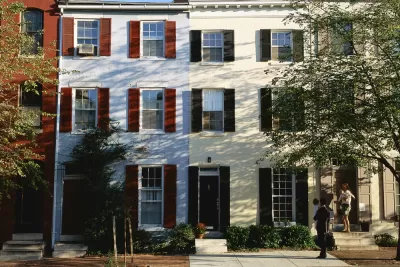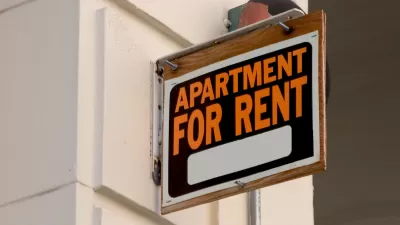By requiring landlords to enter mediation before filing eviction cases, the city’s eviction diversion program has successfully kept thousands of people at risk for displacement in their homes.

Philadelphia’s Eviction Diversion Program (EDP), which assists tenants at risk of eviction, could prove to be a successful model for other cities, writes Jessica Blatt in an article for the Philadelphia Citizen, republished in Next City.
By steering tenants away from eviction proceedings — a process in which less than 10 percent of tenants, compared with more than 80 percent of landlords, have historically had legal representation — Philadelphia’s program allows renters to avoid significant damage to their credit and their ability to secure desirable housing in the future.
The EDP began as part of the city’s effort to address the 17 recommendations provided in the 2018 Taskforce on Eviction Prevention and Response report, which included legally requiring landlords to enter mediation before filing an eviction. The program gained steam during the pandemic, when officials worried “the backlog of eviction cases would turn into an avalanche of people losing their homes.”
The program has had “a significant impact” on evictions in the city, with 85 percent of potential eviction cases now avoiding court proceedings and wait times for hearings reduced by two thirds. See the source article for more details on the program.
FULL STORY: How Philly’s Eviction Diversion Program Became A Model For Cities Around The U.S.

Maui's Vacation Rental Debate Turns Ugly
Verbal attacks, misinformation campaigns and fistfights plague a high-stakes debate to convert thousands of vacation rentals into long-term housing.

Planetizen Federal Action Tracker
A weekly monitor of how Trump’s orders and actions are impacting planners and planning in America.

In Urban Planning, AI Prompting Could be the New Design Thinking
Creativity has long been key to great urban design. What if we see AI as our new creative partner?

King County Supportive Housing Program Offers Hope for Unhoused Residents
The county is taking a ‘Housing First’ approach that prioritizes getting people into housing, then offering wraparound supportive services.

Researchers Use AI to Get Clearer Picture of US Housing
Analysts are using artificial intelligence to supercharge their research by allowing them to comb through data faster. Though these AI tools can be error prone, they save time and housing researchers are optimistic about the future.

Making Shared Micromobility More Inclusive
Cities and shared mobility system operators can do more to include people with disabilities in planning and operations, per a new report.
Urban Design for Planners 1: Software Tools
This six-course series explores essential urban design concepts using open source software and equips planners with the tools they need to participate fully in the urban design process.
Planning for Universal Design
Learn the tools for implementing Universal Design in planning regulations.
planning NEXT
Appalachian Highlands Housing Partners
Mpact (founded as Rail~Volution)
City of Camden Redevelopment Agency
City of Astoria
City of Portland
City of Laramie





























